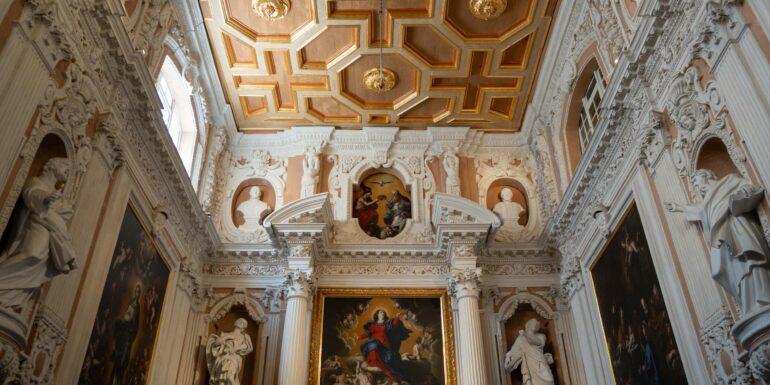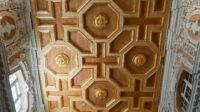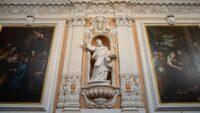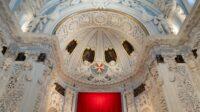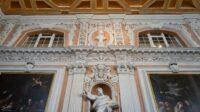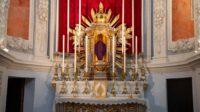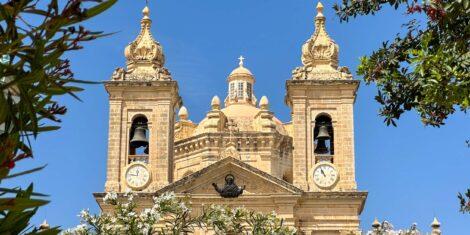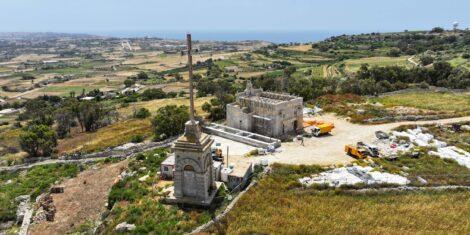The Jesuit Church, also known as the Church of the Circumcision of Our Lord, is one of Valletta’s most treasured architectural and historical landmarks. Originally designed by Jesuit painter and architect Padre Giuseppe Valeriano in the late 16th century, the church and its adjoining structures have undergone centuries of modifications. However, by the late 20th century, these spaces had fallen into disrepair.
Thanks to an extensive and meticulous restoration project undertaken by the Ministry for National Heritage and the Restoration and Preservation Department, this historic complex is once again reclaiming its glory. Among the biggest achievements of this initiative is the revival of the Oratory of the Immaculate Conception and the Oratory of the Assumption (Onorati), two hidden jewels that have now been fully restored and reopened to the public.
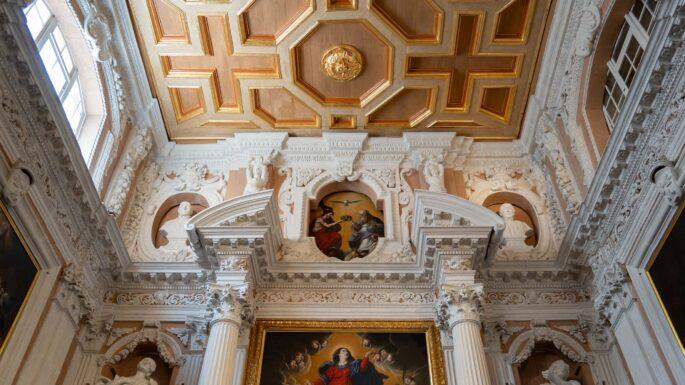
A Church with a Legacy of Resilience
The Jesuit Church, the first Latin cross-shaped church in Malta, was originally built alongside the Collegium Melitense. This institution played a crucial role in the island’s academic and religious history. In 1634, a devastating explosion from a nearby gunpowder store severely damaged parts of the church complex. This disaster led to extensive reconstruction efforts, with military architect Francesco Buonamici introducing stunning Baroque elements to the church’s design.
Over time, two magnificent oratories were established adjoining the church. One was dedicated to the Immaculate Conception and the other to the Assumption (Onorati). These oratories served as places of worship and congregation for academic and religious communities. Setting them apart from traditional confraternities on the island. However, due to neglect and structural deterioration, these spaces had long been inaccessible…until now!

The Oratories: A Testament to the Artistry of the 17th-Century
The Oratory of the Immaculate Conception is an extraordinary example of artistic and architectural innovation from the mid-17th century. Unlike other oratories of the time, which were typically plain and austere, this space boasts elaborate decorations. While the exact authorship of the sculptures remains debated, some believe a young Melchiorre Cafà may have contributed before his departure for Rome. The oratory also features a series of paintings depicting the life of the Virgin Mary. These are attributed to Filippino Dingli and Stefano Erardi.
The Oratory of the Assumption (Onorati) dates back to 1657 and had undergone modifications over several phases. By 1659, the space was enriched with statues, angelic figures, and a decorated wooden soffit. This oratory also showcases a cycle of paintings by Stefano Erardi, with a titular altarpiece depicting the Assumption. These artworks are believed to date to the late 1680s and early 1690s. Making them invaluable pieces of Malta’s artistic heritage.
A Meticulous Restoration Journey
For decades, the Jesuit Church and its oratories suffered from neglect, with rainwater infiltration, crumbling masonry, and structural concerns threatening their survival. The Oratory of the Assumption had even been closed to the public since the 1990s due to damages to the roof. Recognising the need for intervention, the Restoration and Preservation Department embarked on an ambitious project to safeguard and revive these spaces.
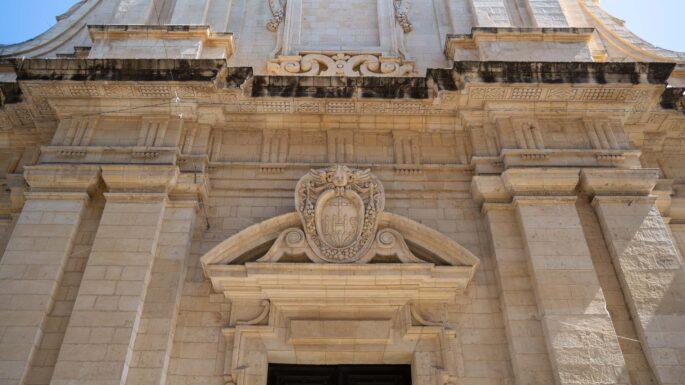
The first phase involved comprehensive documentation and historical research, using advanced laser scanning techniques to measure the building. It also included investigations and trials to assess the deterioration and identify necessary interventions. The restoration of the roof areas was prioritised, addressing structural issues in the dome, drum, bell tower, and cupolas. External façades, particularly those on Merchants, Archbishop, and St. Paul’s Streets, were thoroughly cleaned, repaired, and repointed.
The timber roof over the Oratory of the Assumption was then repaired in 2020, making it possible to address the restoration of the sacristy and both oratories. The choir stalls in the Oratory of the Immaculate Conception were meticulously restored. As was the painted wooden soffit of the Oratory of the Assumption which was once obscured by later alterations.
In addition to architectural conservation, modern systems were integrated to ensure the long-term preservation of these spaces. New lighting and sound systems were installed, along with state-of-the-art fire and intruder detection systems. The oratories’ major paintings underwent expert restoration financed by the Jesuits’ Church Foundation, breathing new life into their historic canvases.
A Revival Beyond Worship
The successful restoration of the oratories of the Jesuit Church has not only preserved an essential part of Malta’s cultural heritage but has also revitalised these spaces for contemporary use. Once closed-off and decrepit, the oratories now serve as cultural venues. Hosting exhibitions, concerts, and community events that engage both locals and visitors alike.
This project stands as a shining example of multidisciplinary collaboration, involving architects, surveyors, conservators, engineers, and scientific researchers. Thanks to their combined efforts, as well as the efforts of the Jesuits’ Church Foundation, these once-neglected masterpieces have been transformed into fully functional spaces that can be appreciated by future generations.

A Visit to Valletta’s Hidden Gems
The Jesuit Church is more than just a place of worship. It is a living testament to resilience, artistry, and architectural evolution. Whether you are drawn to its historical significance, its Baroque beauty, or its restored oratories, this site is a must-visit for anyone seeking to experience Valletta’s rich cultural heritage. The restored oratories and the sacristy are a testament of this richness. One can only imagine how the restored church once reopened to the public will complement these truly incredible spaces now open to all.
